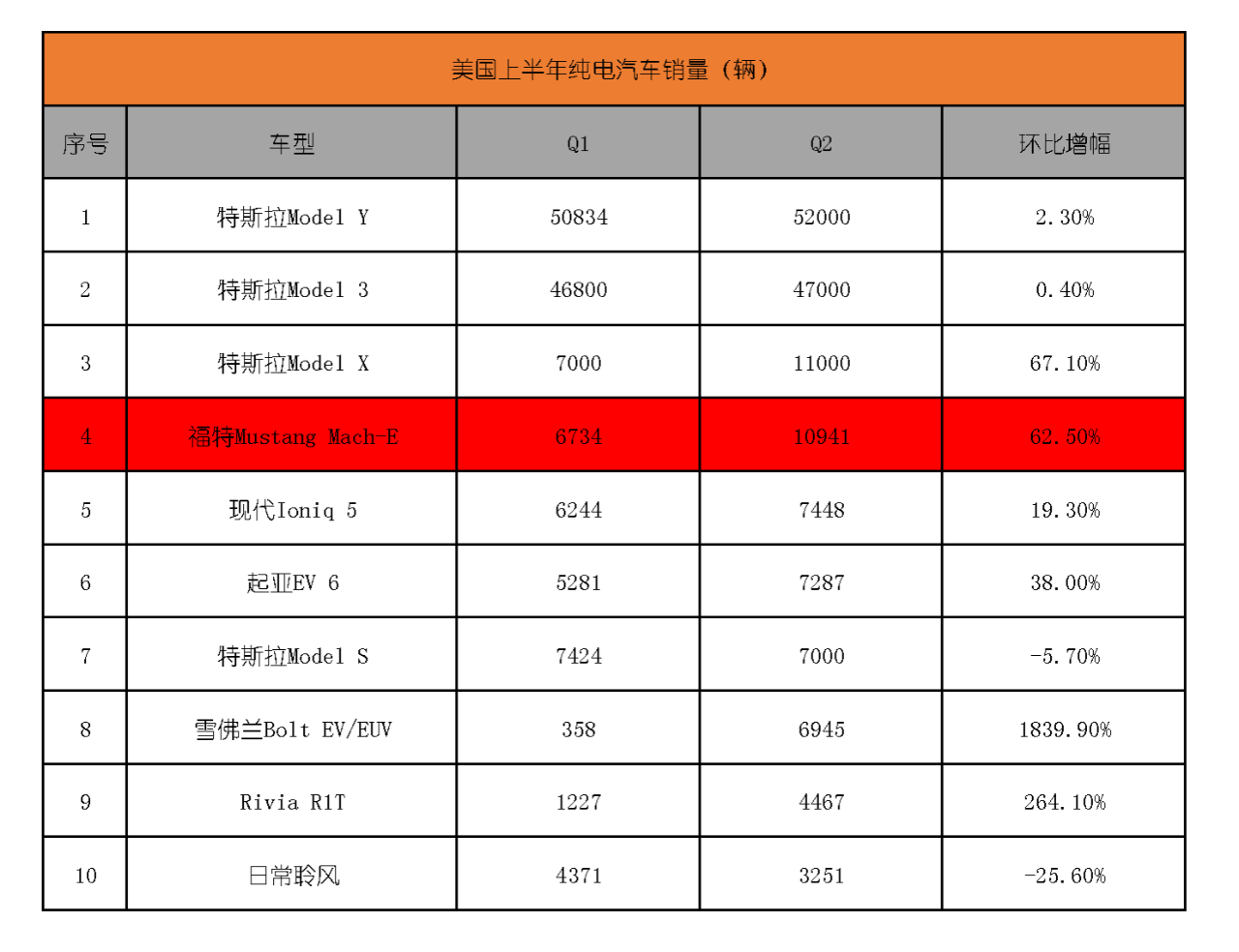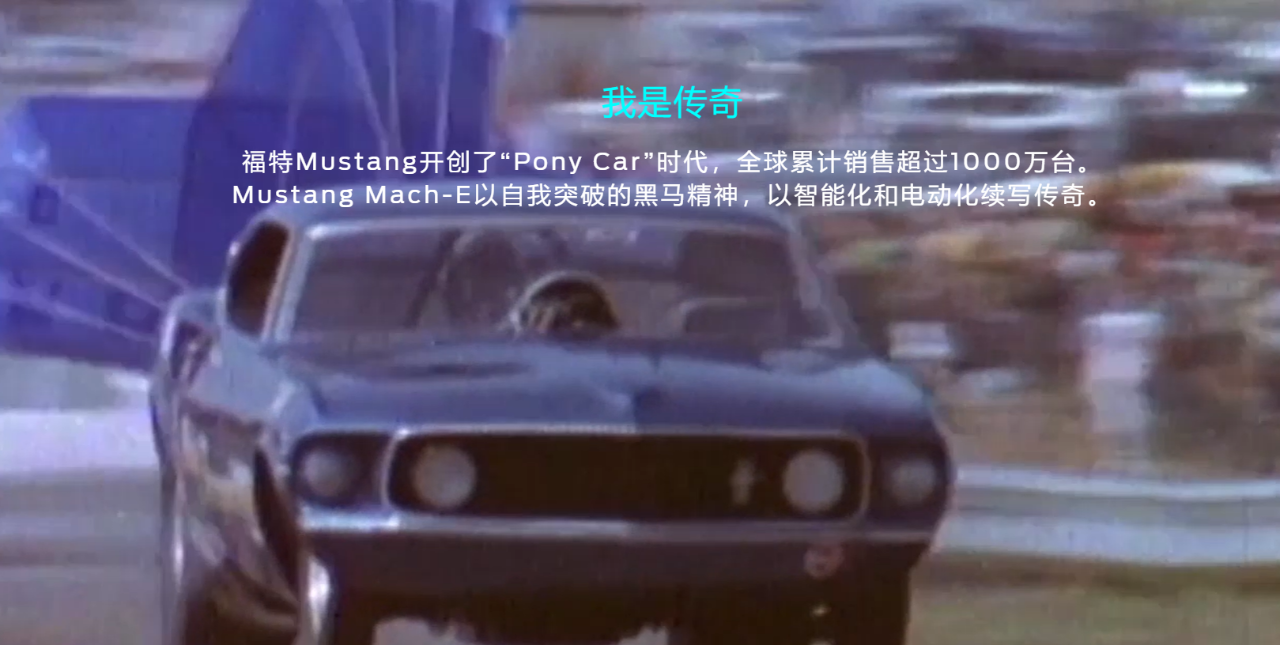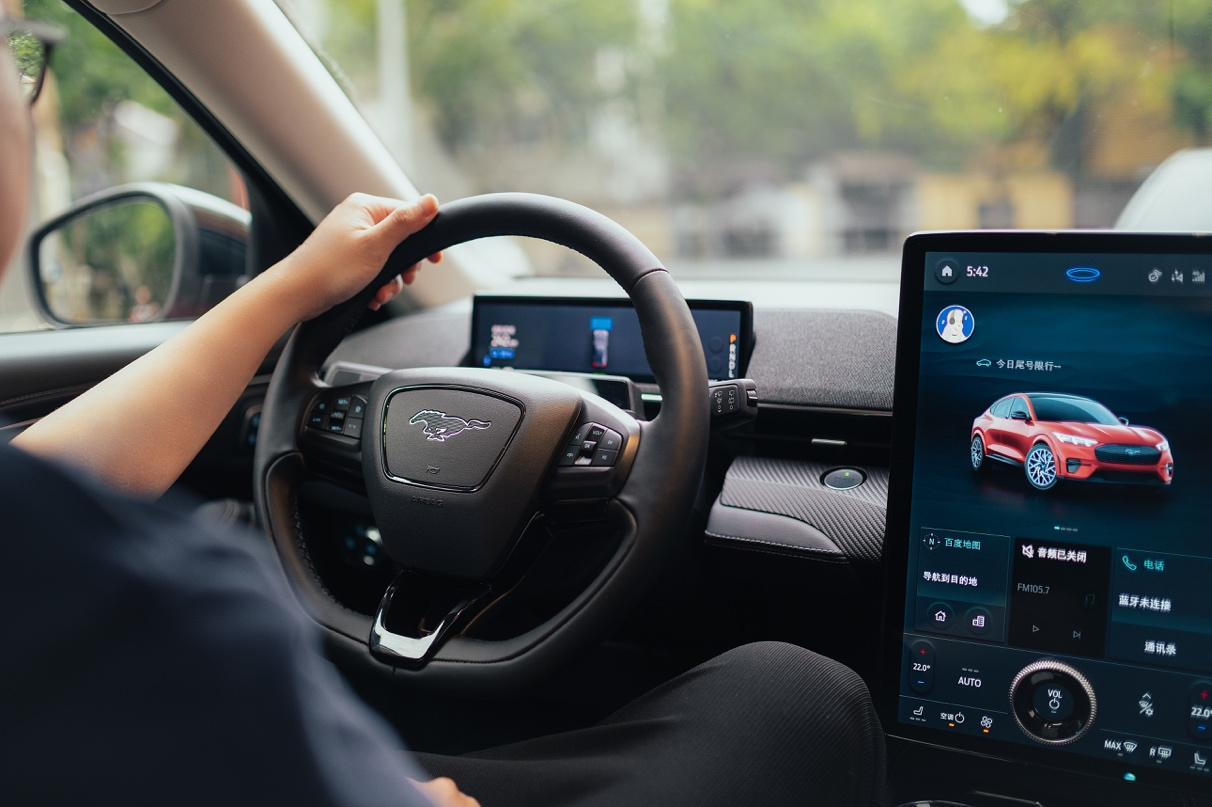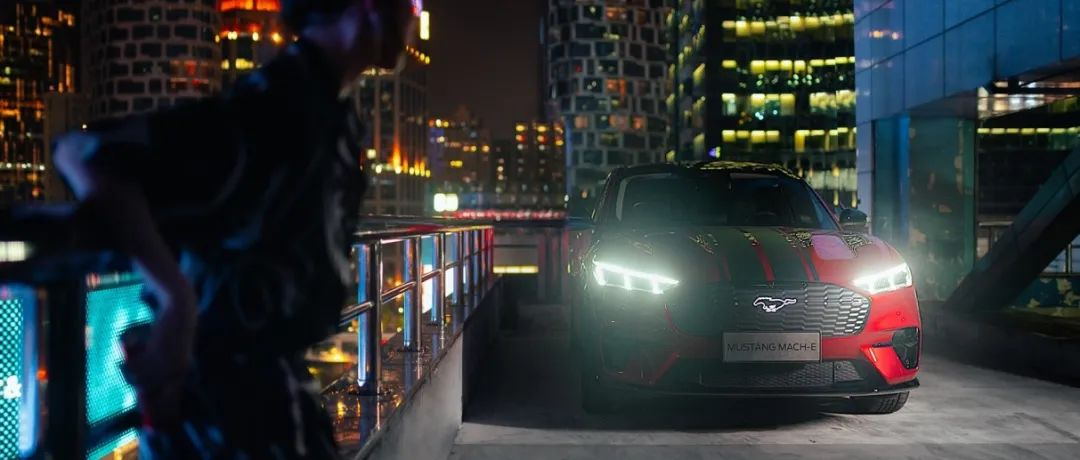The Rise of Electric Mustang
Author: Su Qin
Regardless of whether the era and situation changes for better or worse, a group of people are always shouting slogans while another group are caught off guard. It often brings a huge halo as an extremely unpredictable guest. Under its duality, some are happy while others are sad.
Apparently, during the transition from internal combustion engine to electric motor in the Chinese automobile market, BYD and a group of new forces have surpassed the sluggish import brands in the electrification process, except Tesla. Almost all new energy vehicles of imported brands have returned to the bleak operating state of the pre-liberation era. Even the grandfather of mass production of automobiles, Ford, is no exception.

As an automobile brand that can never be bypassed in the history of automobile culture, Ford has been a leader of the era of change more than a hundred years ago, and also a dominant player in the Chinese automobile market for years. Now, with the advent of the electric vehicle era, Ford has arrived at a brand new historical node.
Electric Mustang Takes the World by Storm
In October 2019, based on Ford’s global high-performance pure electric platform, with the most orthodox Mustang genes, the Mustang Mach-E electric horse from Ford was officially launched with great fanfare near Musk’s SPACE X headquarters, marking the first shot of Ford’s electrification and directly targeting the Model Y released in March of the same year.
Despite the inevitable defeat to Tesla, a company that has been plowing in the pure electric vehicle market in the United States for nearly 20 years, Ford’s electric Mustang has provided a satisfactory answer in the first half of the year with a ranking that was only second to Tesla. Although it did not make a dazzling debut like Mustang, it has secured a decent position in Ford’s electrification process.
In 2019, Ford began a major effort in electrification in China.
That year, Ford established the Intelligent Cockpit team in China, developed a brand-new SYNC+ in-vehicle system tailored for the Chinese market, and applied it to Ford and Changan Ford models. Unfortunately, it did not receive much market response, but the localization strategy and intelligent forerunner laid the foundation for Ford’s subsequent China electrification efforts.
Two years later, in 2021, Ford’s electric vehicles entered China and began taking pre-orders in April of that year, with deliveries starting in December.
At that time, in the Chinese market, Ford’s electric vehicles faced Tesla as its old rival, which already dominated a third of the market share; BYD began to dominate the sales of new energy vehicles; new players such as Weltmeister (WM) and other brands have also developed their own clear positioning and become quite climate; and Huawei, a giant tech company, sounded the horn of its foray into the new energy vehicle industry with its AITO series. The performance opportunity left for the Ford electric vehicle, which was lagging behind in the Chinese market, was really running out.
As the times are changing and the landscape is burning, Ford has also accelerated its pace of adaptation.
In March of this year, Ford announced the separation of its automotive business department and the establishment of three distinct business units: electric vehicles (Ford Model e), fuel vehicles (Ford Blue), and commercial vehicles (Ford Pro), delineating precise segmentation of business lines, and transforming to electrification at full speed from a higher strategic perspective.
Of course, the market after March is clear to both you and me. The COVID-19 pandemic hit the new energy vehicle industry like a flood, causing everyone’s sales and production capacity to plummet.## Revving up again
Since the Ford Mustang Mach-E uses ternary lithium batteries produced by BYD’s Xi’an factory, its production capacity fell into a “pitfall” since the Xi’an lockdown caused by the epidemic since January of this year. At the same time, important processes such as sales network expansion and publicity have been repeatedly postponed, “stumbling” the Mustang Mach-E. With only a few hundred units sold on average per month, it faced a dilemma of ice and fire compared to the U.S. market.
However, it seems that there has been a turnaround in recent developments.
Starting again
On September 26th, following the divestiture, the Ford Mustang Mach-E Technology Co., Ltd. (hereinafter referred to as “Mach-E”) was officially launched in China, which was called “a new starting point,” “a power source,” and “an incubator” by Ford China’s President and CEO, Chen Anning. It will attack electrification and intelligence with Chinese local talents.

The establishment of Mach-E is undoubtedly an important milestone in Ford’s electrification strategy localization in China. Only the Chinese understand the needs of the Chinese best, and this chess move injected a shot in the arm for the development of the Mustang Mach-E.
In addition, according to data from the Automotive Home Research Institute, in the new energy vehicle attention list for September, Mach-E rose more than 50 places, temporarily ranking 16th, after Li Xiang L9 and XPeng P7.
Although Mach-E sold only 272 units in September, the upward trend has begun to emerge. In the opinion of “Electric Drive” journalists, there are two current situations that Mustang Mach-E must be wary of to break the dilemma of low sales in entering the Chinese market.
First, beware of the trap of emotions.In 1962, to commemorate the US P-51 Mustang fighter, known as the “King of Fighters” in World War II, Ford developed the first mid-engine Mustang concept car. Two years later, the first-generation mass-produced Mustang equipped with a V8 engine was launched at the New York World Expo.
As a high-performance civilian sports car with great value for money, Mustang completely captured the hearts of rockers, passionate and individual hippies, as well as countless young Americans pursuing freedom and unrestrained lifestyles. In just one year, more than 410,000 Mustangs were sold, which was a peak performance from the start.
The popularity of Mustang was also spread to China through some films and TV series, gradually becoming a cultural phenomenon that made some Chinese car fans obsessed with it. However, Mustang did not officially enter China with the name “野马” (wild horse in Chinese) until November 17, 2015.
Nowadays, Mustang has almost 60 years of history and a global cumulative sales volume of over 10 million units, but its sales in China account for only 2‰~3‰ of its global sales, with only tens of thousands of units.
Therefore, Ford Electric Pony should be cautious about being frequently associated with Mustang for promotion. On the one hand, this will lead to the loss of the independence of Ford Electric Pony, and on the other hand, it may cause the staff of Ford Electric Pony to unconsciously fall into a halo of comfortable and glorious history, becoming overly self-important and falling into an emotional trap.
 The emotional trap brought about by the glorious history is essentially no different from the brand halo of BBA, which is extremely prone to causing workers to have a distorted mentality of “if it doesn’t sell well, it’s because you don’t understand, not because I’m incompetent”. Moreover, the user base of Mustang in China is simply not enough to support Ford’s electric horse to achieve sales growth through emotions.
The emotional trap brought about by the glorious history is essentially no different from the brand halo of BBA, which is extremely prone to causing workers to have a distorted mentality of “if it doesn’t sell well, it’s because you don’t understand, not because I’m incompetent”. Moreover, the user base of Mustang in China is simply not enough to support Ford’s electric horse to achieve sales growth through emotions.
From the fact that the Ideal L9 was promoted to the top-selling full-size SUV in the world by Chinese users alone in September, it can be seen that current users are becoming less and less interested in the so-called brand halo, and they often care more about practicality, sense of technology, and whether it can meet their most immediate values.
Of course, it is necessary for Ford’s electric horse to take advantage of Mustang’s momentum in the difficult breakthrough process, but Mustang’s position must be well placed, be careful not to steal the limelight of the electric horse, beware of stirring up the workers’ mentality, and be vigilant against emotional traps. Telling the story of Ford’s electric horse in China is the top priority.
Second, be careful of preconceptions:
At the Ford electric horse day in Shanghai on September 26, Ford electric horse announced the updated product positioning as “Legendary electric SUV”. This positioning can be understood from three aspects.
(1) Legendary
Legend refers to the Mustang design genes inherited by Ford electric horse.
The illuminated Mustang silhouette logo is combined with the classic shark nose face, which can be described as “when the spring breeze meets the dew, it is better than countless people in the world”. The boldness of the Mustang family is immediately diffused.
The sleek back curve extending from the large angle A-pillar and the three-pillar taillights inherited from the Mustang family express the sense of movement and the unique American muscle feel to the full.
(2) Power
“Electric” naturally refers to electrification.
The Ford Mustang Mach-E is built on the Ford Pure Electric Platform and is equipped with the new generation SYNC+ 2.0 intelligent driving system. It has the largest 15.5-inch central control screen in its class, front-mounted intelligent driving assistance hardware across the board, and a standard L2 level Ford Co-Pilot360 professional package, which includes more than 20 intelligent driving assistance functions. Based on the evolvable FNV electronic and electrical architecture, the Ford Mustang Mach-E can also be continuously upgraded and renewed through OTA upgrades.

However, in terms of “power”, the Ford Mustang Mach-E still carries an American style of simplicity and roughness and has been criticized by some users for its user experience. It still needs to continuously improve based on the needs of Chinese users in the future.
(3) Speed
As an SUV that inherits the Mustang gene, the Ford Mustang Mach-E naturally runs quickly. This is also the most satisfying aspect of the current Ford Mustang Mach-E owners.
The Ford Mustang Mach-E uses a front MacPherson rear five-link independent suspension system, which was calibrated by Ford’s global performance team using professional racing simulators. It has three driving modes: light rain, immersive, and uninhibited, corresponding to eco, normal, and sport modes, respectively. It also supports a single pedal mode, bringing out the American muscle car’s sense of movement and excitement from multiple dimensions.
Among them, the GT version has a maximum output power of 359kw and can accelerate to 100 km/h in 3.65 seconds, allowing owners with an affinity for wild mustangs to find the youthful joy of electric speed at the press of a pedal.
That said, the current Ford Mustang Mach-E is clearly a combustion engine car with an electric car shell in a larger sense.
In the 300,000 RMB price range, apart from old rivals Tesla and home-use models like BYD and WENJIE, there is another little-known model that dominates with strong handling, and that is the Zeekr 001.
In September, Zeekr 001 sold 8,276 vehicles, ranking sixth in the 250,000 to 350,000 RMB price segment on the 25auto.com car forum.

Zeekr 001 was launched in April of last year and deliveries began on October 23, similar to the Ford Mustang Mach-E. However, on October 15th, the 50,000th Zeekr 001 was officially delivered, soaring forward with its strong product power in the “luxury hunting wagon” position.
Even if the two models are similar in terms of product power, Ford Mustang Mach-E has some inherent disadvantages in terms of localized user experience and user co-creation-based operations as a foreign car model facing the Chinese Zeekr 001.However, what matters most is that among the 300,000-level pure electric cars that emphasize handling, the hot sales of the Zeekr 001 will undoubtedly generate a dominant impression in the minds of users ahead of the Ford Mustang Electric. Whether the “Legendary Electric SUV” can gain the upper hand over the “Luxury Hunting Coupe” remains to be seen, and it will require Ford Mustang Electric to make a comprehensive strategic push.
Insights into Electric Vehicles
From Mustang to the electric Mustang, there have been significant changes in powertrain, operation logic, and luxury definition over the past 60 years. In China, the lack of traditional fuel car culture actually makes Chinese users more receptive to new energy vehicles, and it makes brands based on wholly redefined new energy vehicles easier to surpass traditional ones. At this point in the process of localization, traditional imported brands like Ford inevitably encounter difficulties in adapting to local conditions.
The Chinese market is a cake on which anyone would drool, with a new energy vehicle retail penetration rate of 31.8% in China as of September, and the domestic independent brand penetration rate rising to 55.2% in September.
Therefore, while each brand is eager to gain product strength, user operations, and energy supplementation, Ford Mustang Electric must catch up to Zeekr at an ultra-fast pace, entering the electrification phase with flexible speed and telling the story of Mustang Electric in China.
Fully charged, let the Mustang run a little longer…
This article is a translation by ChatGPT of a Chinese report from 42HOW. If you have any questions about it, please email bd@42how.com.
